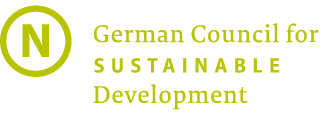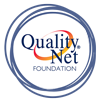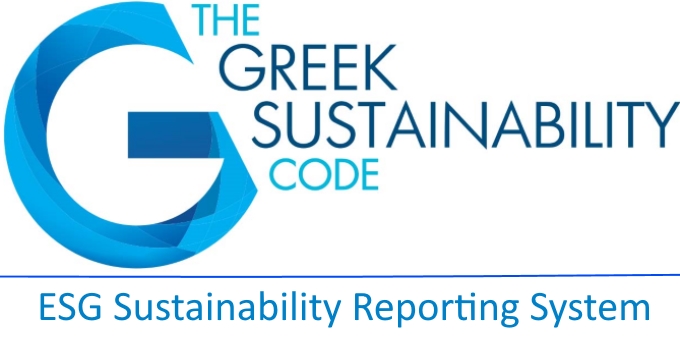consists of 4 pillars and it is based upon 20 Criteria that help in the assessment of the economical, environmental and social performance of the Organizations/Companies making simple but comprehensive the way an Organization/Company adopts the Code and incorporates Sustainable Development and Corporate Responsibility policies in its operations and management.
CRITERIA TO 1–4 CONCERNING STRATEGY
The criteria of this section form the basis of the Sustainability Code. The Organization answers how familiar it is with the challenges, opportunities and risks that are associated with its core activities in terms of Sustainable Development and Corporate Responsibility and which its activity should face up to. The Organization answers if it has a plan for how it wish to handle them in the medium and long term, if it sets clear goals – derived from them – to address social and environmental challenges in a proactive way and if it is already keeping an eye on its entire value chain – from the extraction of raw materials to disposal. By reporting in detail on the following four criteria, the Organization will be laying the foundation for satisfying the Sustainability Code and it will be preparing the ground so it will be able to handle all further topics well, too.
1. Strategic Analysis & Action
The Organization discloses how it analyzes the opportunities and risks of its major activities in the context of Sustainable Development.
The Organization explains what concrete measures it is undertaking to operate in compliance with the essential and recognized sector-specific, national and international standards.
2. Materiality
The Organization discloses what aspects of Sustainable Development & Corporate Responsibility have a significant impact on its operations and how, in its strategy, it takes them into account and systematically addresses them.
3. Objectives
The Organization discloses what qualitative and/or quantitative Sustainable Development & Corporate responsibility goals are set and operationalized, and how their level of achievement is monitored.
4. Management of Value Chain
The Organization states what significance aspects of Sustainable Development & Corporate Responsibility have for added value and how deep into the value-added chain the sustainability criteria are verified.
CRITERIA TO 5–10 CONCERNING PROCESS MANAGEMENT
The following six criteria describe how the Organization efficiently and systematically manages Sustainable Development and Corporate Responsibility. This ranges from questions such as who is responsible and whether there are rules and processes that guide the work to whether key data exist which make any progress and developments visible. The Organization answers if there are incentives – material or non-material ones– that motivate the executives and employees to steadfastly pursue sustainable development and corporate responsibility targets, if the Organization also attends to the opinion of groups outside its activity who have identifiable interests in its development and if it is taking into consideration the demands of sustainable development and corporate responsibility when it improves products or services.
5. Responsibility
Organization’s accountability level in the corporate management and the involvement of the administration with regard to Sustainable Development & Corporate Responsibility is disclosed.
6. Rules & Processes
The Organization discloses how the Sustainable Development & Corporate Responsibility strategy is implemented in its operation by way of rules and processes.
7. Monitoring
The Organization discloses how and what performance indicators (KPI’s) on sustainable development & corporate responsibility are integrated into its periodical internal planning and control and how the reliability, comparability and consistency of the data applied to internal controls and external communication are safeguarded through appropriate processes.
8. Incentive and reward systems for Sustainable Development
The Organization discloses how target agreements and remuneration schemes for executives and employees are also geared towards the agreed goals and how they are aligned towards long-term value creation. It discloses the extent to which the achievement of these goals forms part of the evaluation of the top managerial level (board / managing directors) conducted by the monitoring body (supervisory board / advisory board).
9. Stakeholder Engagement
The Organization discloses how the socially and economically relevant stakeholders are identified and integrated into the Sustainable Development & Corporate Responsibility process. It is disclosed whether and how an ongoing dialogue takes place with them and how the results are integrated into the Sustainable Development & Corporate Responsibility process and strategy.
10. Product Responsibility and Innovation
The Organization discloses how the principles of Sustainable Development, Corporate Responsibility & energy efficiency are taken into consideration with regard to innovations in products and services (e.g. utilization of resources, energy saving and responsible use of products by customers). Likewise, a further statement is made with regard as to how the current and future impact of the key products and services in the value chain and in the product life cycle are assessed.
CRITERIA TO 11–13 CONCERNING ENVIRONMENT
The questions in this section focus on the environmental aspects of Sustainable Development and Corporate responsibility. The Organization has to answer if it has a good overview of what natural resources it uses and to what extent. If he has set goals to cut this consumption and how it aims to achieve them. If it you balances its greenhouse gas emissions and if it has formulated goals for their reduction targets.
11. Usage of Natural Resources
The Organization discloses the extent to which natural resources are used for its activities, providing information even for energy controls. Possible options here are materials, the input and output of water, soil, waste, energy, emissions, land and biodiversity as well as emissions for the life cycles of products and services.
12. Resource Management
The Organization discloses what qualitative and quantitative goals it has set itself with regard to its resource and energy efficiency, its use of renewables, the increase in raw material productivity and the reduction in the usage of ecosystem services, and how these goals have been met or will be met in the future.
13. Climate-relevant emissions
The Organization discloses the GHG emissions in accordance with the Greenhouse Gas (GHG) Protocol or standards based on it and states the goals it has set itself to reduce emissions.
CRITERIA TO 14–20 CONCERNING SOCIETY
The seven criteria of this section deal with the social issues of Sustainable Development and Corporate Responsibility that are relevant to an Organization – starting with the questions about whether the Organization respects basic employment rights; how it deals with the issues of equal opportunities, health and the work-life balance; and how it helps to make and keep the workforce employable in the face of demographic changes. Aspects that are also significant are human rights in the supply chain, the role of the Organization in the region, and whether and how it tries to influence political decisions. Finally, the Organization is asked to explain what it is doing to counter the risk of bribery.
14. Employment Rights
The Organization reports on how it complies with the employment rights of both nationally and internationally recognized standards and how it promotes employee involvement in Sustainable Development & Corporate Sustainability Management.
15. Equal Opportunities
The Organization discloses in what way it has implemented national and international processes/principles and what goals it has set to promote equal opportunities and diversity, occupational health and safety, the integration of migrants and people with disabilities, fair pay as well as a work-life balance.
16. Qualifications
The Organization discloses what goals it has set and what measures it has taken to promote the employability of all employees, i.e. the ability of all employees to participate in the working and professional world, and to adapt it to demographic change.
17. Human Rights in the supply chain
The Organization discloses what measures it takes for the supply chain with the aim of ensuring that human rights are respected globally and that forced and child labour as well as all forms of exploitation are prevented.
18. Corporate Citizenship
The Organization discloses how it contributes to corporate citizenship in the regions in which it conducts its activity (the criterion refers to the Organization’s commitment that overcomes the boundaries of its direct operation with regard to Sustainable Development & Corporate Responsibility and covers issues of sponsorships, donations and employees’ volunteering).
19. Initiatives and Political Influence
The Organization discloses, by country, all significant input relating to legislative procedures, all entries in lobby lists, all significant payments of membership fees, all contributions to governments as well as all donations to political parties and politicians.
20. Corruption prevention and alleviation
The Organization discloses which measures, standards, systems and processes are in place to prevent unlawful conduct and, in particular, corruption, and how they are verified. The Organization depicts how corruption and other contraventions in the company are prevented and exposed and what sanctions are imposed.











